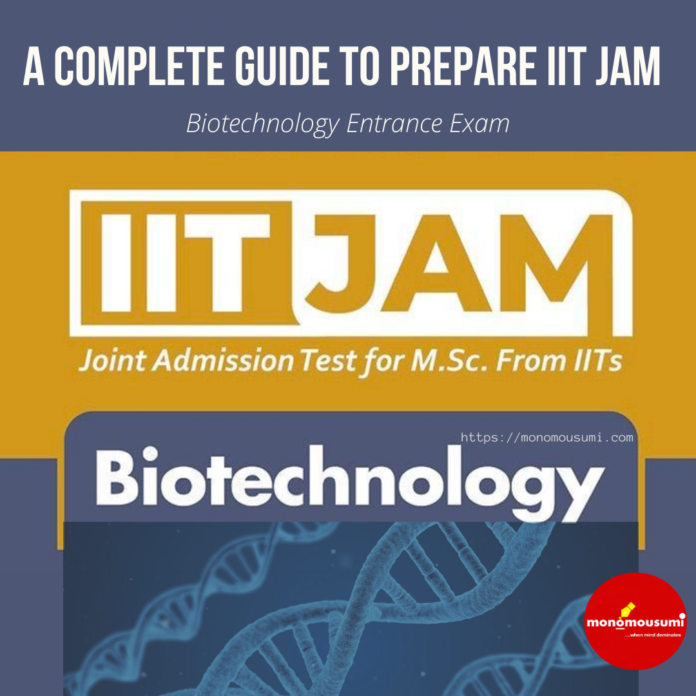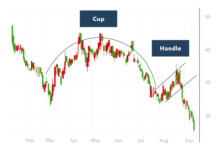IIT JAM Biotechnology is considered as one of the toughest entrance exam to pursue M.sc and other courses from institutes like IIT, NIT, IISc, etc. to prepare for this exam, candidates must know the complete analysis of the exam to understand the difficulty level, a number of questions asked from the section, topics with the different marking weightage and time provided to solve the paper, etc.
Master of Science (MSc) is one of the most popular academic degree courses among Science students after graduation. We all know that the period of an MSc degree is usually two years in Indian universities/ colleges. After the completion of an MSc degree, there are different options available for students – they can go into research or can even look for a job. In some reputed universities/ colleges in India, students are also hired directly by big companies after the completion of their MSc course.
Precisely, enrolling in an MSc degree program translates into making a significant investment in a student’s professional career. Therefore, at the time of appearing for an MSc entrance exam, stress levels among candidates are extremely high. After all, securing admission at a good MSc college is one of the most important factors of building a successful career ahead.
However, good performance in an MSc entrance exam requires not only proper study but a well-thought-out strategy. And, it takes a lot of hard work for candidates to clear an entrance exam with flying colors. So what should an aspirant do next? Here, we are going to discuss all the IIT JAM biotechnology entrance exam.
SYLLABUS
The syllabus of the IIT JAM Biotechnology is as follow, the syllabus contains totally four subjects which are such biology, chemistry, mathematics and physics.
BIOLOGY:
General biology:
- Taxonomy,
- Heredity,
- Genetic variation,
- Conservation,
- Principles of ecology,
- Evolution, Techniques in modern biology.
Biochemistry and physiology:
- Carbohydrates;
- Proteins;
- Lipids;
- Nucleic acids;
- Enzymes;
- Vitamins;
- Hormones.
- Physiology:
Plant physiology:
- Metabolism-Glycolysis,
- TCA cycle,
- Oxidative Phosphorylation:
- Photosynthesis.
- Nitrogen Fixation,
- Fertilization and Osmoregulation.
Animal physiology:
- Vertebrates – Nervous system,
- Endocrine system,
- Vascular system,
- Immune system,
- Digestive system and Reproductive System.
Basic biotechnology:
- Tissue culture,
- Application of enzymes,
- Antigen-antibody interaction,
- Antibody production,
- Diagnostic aids.
Molecular biology:
- DNA; RNA,
- Replication,
- Transcription,
- Translation,
- Proteins,
- Lipids and Membranes,
- Operon model,
- Gene transfer.
Cell biology:
- Cell cycle,
- Cytoskeletal elements,
- Mitochondria,
- Endoplasmic reticulum,
- Chloroplast,
- Golgi apparatus,
- Signaling.
Microbiology:
- Isolation,
- Cultivation,
- Structural features of virus.
- Bacteria,
- Fungi,
- Protozoa,
- Pathogenic micro- organisms
CHEMISTRY:
- Atomic structure
- Bohr s theory and Schrodinger wave equation;
- Periodicity in properties;
- Chemical bonding;
- Properties of s, p, d and f block elements;
- Complex formation;
- Coordination compounds;
- Chemical equilibria;
- Chemical thermodynamics (first and second law);
- Chemical kinetics (zero, first, second and third order reactions);
- Photochemistry;
- Acid-base concepts;
- Stereochemistry of carbon compounds;
- Inductive, electromeric, conjugative effects and resonance;
- Chemistry of Functional Groups:
- Hydrocarbons, alkyl halides, alcohols, aldehydes, ketones, carboxylic acids, amines and their derivatives;
- Aromatic hydrocarbons, halides, nitro and amino compounds, phenols, diazonium salts, carboxylic and sulphonic acids;
- Mechanism of organic reactions;
- Soaps and detergents;
- Synthetic polymers;
MATHEMATICS:
- Sets,
- Relations and Functions,
- Mathematical Induction,
- Logarithms,
- Complex numbers,
- Linear and Quadratic equations,
- Sequences and Series,
- Trigonometry,
- Cartesian System of Rectangular Coordinates,
- Straight lines and Family,
- Circles,
- Conic Sections,
- Permutations and Combinations,
- Binomial Theorem,
- Exponential and Logarithmic Series,
- Mathematical Logic,
- Statistics,
- Three Dimensional Geometry,
- Vectors,
- Matrices and Determinants,
- Boolean Algebra,
- Probability,
- Functions,
- Limits and Continuity,
- Differentiation,
- Application of Derivatives,
- Definite and Indefinite Integrals,
- Differential Equations.
PHYSICS:
- Physical World and Measurement,
- Elementary Statics and Dynamics,
- Kinematics,
- Laws of Motion,
- Work,
- Energy and Power,
- Electrostatics,
- Current electricity,
- Magnetic Effects of Current and Magnetism,
- Electromagnetic Induction and Alternating Current,
- Electromagnetic waves,
- Optics
- Dual nature of matter and radiations,
- Atomic nucleus,
- Solids and semiconductor devices,
- Principles of communication,
- Motion of system of particles and rigid body,
- Gravitation,
- Mechanics of solids and fluids,
- Heat and thermodynamics, oscillations, waves
Exam Pattern:
Aspects about an IIT entrance exam that candidates should be aware about before appearing for the test are as listed below:
Mode: While most MSc entrance exams are conducted in offline mode but this important exam is purely computer-based tests. Therefore, candidates who are especially aiming at clearing exams like IIT JAM must give some online mock tests to get a hang of the computer-based entrance tests.
Duration: Duration of this entrance exams is typically three hours.
Type of questions:
IIT JAM contains a different section of questions they are all as follow,
Sec A – multiple choice questions
Sec B – multiple select questions
Sec C – numerical type questions
Marking scheme: Marking scheme for this entrance exam is totally different are as below,
Section A:
Section A contains 30 questions that are out of 30 questions first 10 questions contain 1 mark for each correct answer and 1/3 mark is deducted for each incorrect answer. And remaining 20 questions which carry 2 marks for each correct answer and 2/3 is deducted for each incorrect answer.
Section B:
Section B which contains a total of 10 questions and each question carries 2 marks for a correct answer, in this section, there is a no negative marking system.
Section C:
The section C contains totally 20 questions, out of 20 questions first 10 questions contains 1 mark for each correct answer and reaming 10 questions which carry 2 marks for each correct answer. This section also No have any negative system.
Therefore, candidates are recommended to mark their answers carefully. For exams in which negative marking exists, candidates are also recommended not to attempt a question if they are unsure of the answer.
Number of questions:
This entrance exam contains total 60 questions. And deferent sections contains deferent type of questions are as follow,
Sec A= 30 Questions – Multiple choice questions
Sec B= 10 Questions – Multiple select questions
Sec C= 20 Questions – Numerical answer type
Total marks: Similar to the total number of questions, total marks that a candidate can score in an entrance exam also vary. This entrance exam contains total 100 marks.
The syllabus for IIT entrance exams is generally released well in advance on their official website. Candidates are recommended to prepare each and every topic mentioned in the syllabus thoroughly to perform well in the exam.
It may be noted that the syllabus for this entrance exam includes candidates’ 10+2+3 course material.Why to do M.sc in IIT?
Indian education system provides a 10+2+3+2 education which includes a class 1 to 10 school education (10 years), then class 11th and 12th (2 years). After completion of the formal 10+2 school education there are two common options such as 3 years B.sc (Bachelor of Science) course usually followed by 2 years Master of Science (M.sc) program. However based on US system of 10+2+4, various B.sc honors programs (4 years B.sc) and technical degree programs (such B.Tech) have already been introduced. B.sc and M.sc courses are considered as conventional non-vocational programs. In contrast to vocational undergraduate and graduate programs such as BC (Bachelor of Science), BBA (Bachelor of business administration), or technical courses such BTech and MTech, the M.sc courses were often considered a step behind the primarily due to conventional methodology of teaching and classical course content and also relatively low paid campus placements in contrast to vocational or technical courses. However the trend is now changing, emergence of several specialized courses and increase in the research fellowship the charm of master’s program in life sciences has grown significantly over the past few years.
How to Choose Best M.sc in IIT’’s?
Few more questions that we face after completing b.sc are, which program should I choose in M.sc? , should it be the same as my B.sc or it should be different? Which forms should I fill and which forms to be omitted and so on. The answer to this question is not simple and may again vary from individual to individual. However, one can think of a lot of future possibilities before making a decision. The first thing I would suggest don’t make decisions at the time of filling the form or applying for the courses try to fill as many as course as you may do until you have financial dip which prevents you from filling many forms. The right time to make a decision is once you have qualified the IIT exam and you have a call letter or results in your hand. By making a decision prior to filling the application form you will narrow down your opportunities.
Short term goals and long term goals:
Goals of your life may very important factor in deciding which course you should pick for during M.sc in IIT biotechnology. Infect, we may divide our life’s goals into short term goals and long term goals.
Do we have jobs after M.sc in IIT?
The most critical question that bothers most of us while deciding for an M.sc program is do we have jobs after M.sc in IIT? Is there any campus placement after M.sc, I would answer as yes and no both. Yes! We certainly have jobs after M.sc in IIT but everyone has its standards for jobs. For someone a job of mere 20K per month maybe a job, but for others, more than 1lac per month may not be decent. So let me just clarify here, that it will be very rare that once get more than 50K per month just after the M.sc course in IIT. And second, there is no campus placement for M.sc students in any government institutes of colleges. This is just a glitter created by private colleges and universities which call companies for campus interviews and use this as a method for advertisement. While I was doing B.sc in my college, I also participated in a campus interview and I was selected for a call center by IBM Daksha at an annual package of 2lac, which college management used promotion, although I had no interested in joining call center.
A very few colleges (again private colleges) have tie up the biotech companies and they carry out campus selections in some of the masters courses such as M.sc biotechnology or M.sc food technology etc.
Primary Carrier Options After Masters in IIT (life science)
How to prepare for IIT JAM Biotechnology:
Go through the IIT JAM preparation tips and important topics to study in biotechnology paper. Find out how to formulate the preparation strategy to crack IIT JAM biotechnology paper.
Preparation tips to crack IIT JAM Biotechnology paper:
Candidates can go through IIT JAM preparation tips I mentioned below in order to formulate a strategy to crack JAM exam for biotechnology.
Be acquainted with IIT JAM pattern:
The main thing is that, to secure well rank in IIT JAM biotechnology paper, candidates need to know the exam pattern for the exam. IIT JAM pattern is such that candidates need to attempt Multiple Choice Questions (MCQs), Multiple Select Questions (MSQs) and Numerical answer Type (NAT) Questions. There are total 60 questions in this paper.
Know the marking scheme:
Candidates are informed that there is negative marking in IIT JAM Biotechnology paper. Aspirants need to be doubly sure of the marking scheme of the exam. This is necessary to ensure that they score maximum marks in the test and avoid negative marking as much as possible.
| No of Questions | Marks Added or Each correct Answer | Marks deducted for each wrong answer |
| First 10 MCQs | 1 mark each | 1/3 mark be deducted |
| Next 20 MCQs | 2 marks each | 2/3 mark be deducted |
| 10 MSQs | 2 marks each | No negative marking |
| First 10 NAT Questions | 1 mark each | No negative marking |
| Next 10 NAT Questions | 2 marks each | No negative marking |
Know IIT JAM syllabus:
Biotechnology paper for NIFT exam comprises of questions from subject such as – chemistry, biology, mathematics and physics. The weightage of the questions asked from these subjects in IIT JAM Biotechnology paper are:
| Subject | Weightage |
| Biology | 44% |
| chemistry | 20% |
| Mathematics | 18% |
| Physics | 18% |
IIT JAM syllabus for biotechnology paper is such that questions from biology and chemistry are 10+2+3 level where as from mathematics and physics are of 10+2 level.
Study important topics:
To score well in IIT JAM Biotechnology paper, aspirants need to be well acquainted with the important topics from which questions with maximum weightage are asked in the exam. Some topics that aspirants should thoroughly study to score well in IIT JAM exam are as mentioned below:
| Subject | Important Topics |
| Biology | Biochemistry |
| Physics | Mechanics |
| Chemistry | Organic chemistry |
| Mathematics | Coordinates and geometry |
Last minute preparation:
Last-minute preparation varies for many students for some it may be just a few hours before the exam while traveling in a metro or out rickshaw, For others, it may be whole right prior to the exam. It might work for a few, but those who have not tried this never experiment in your first competitive exam. Always take a nice sleep (conventional advice) and relax before the exam. Collect all the requisite material (admit card, writing material, etc), on the eve of the exam, check for the exam center (a few lucky students with their guardians taking care of these things may relax), and on the day of the exam reach well in time. It is better to have the final revision starting one week prior to the exam because you may be appearing in the exam and the IIT have a different syllabus and pattern. Therefore the apart from the common preparation you did for a complete session need to be revised as per the exam. So give at least a week’s time for customized preparation of this exam.
Therefore, if candidates are thorough with their BSc syllabus and have a clear understanding of the concepts studied during graduation, there are high chances of clearing an MSc entrance exam with a good score.
Cut offs of the IIT JAM Biotechnology:
Separate IIT JAM biotechnology cut off marks are their which is depends upon category of the student. There are deferent categories are considered in this exam like General, OBC, and SC/ST students.
Cut off for the exam will be released based on the difficulty level of exam, a number of vacancies available, the number of student appeared, previous year cut off and average marks obtained by candidates in IIT JAM.
The previous year cut off for the IIT JAM Biotechnology is as follow,
| Category/Year | General | OBC | SC/ST/PWD |
| 2020 | 39.86 | 35.87 | 19.93 |
| 2019 | 22.93 | 20,64 | 11.46 |
| 2018 | 27.67 | 24.9 | 13.84 |
Some of the Most Useful Books for IIT JAM Biotechnology Preparation:
Given below are some of the useful books that candidates can study to prepare for popular IITJAM .Physics, Chemistry, Computer Science, Biotechnology, and Biochemistry.
Biochemistry:
| Book Name | Author |
| Lehninger Principles of Biochemistry | Albert L Lehninger |
| Biochemistry | Jeremy M Berg, John L Tymoczko, Lubert Stryer |
| Biochemistry | Donald Voet , Judith G Voet |
| Biochemistry | U Satyanarayana, U Chakrapani |
Physics:
| Book Name | Author |
| Physics of Atoms and Molecules | BH Bransden & CJ Joachain |
| Atomic Physics (Modern Physics) | SN Ghoshal |
| Introduction to Atomic Spectra | Harvey Elliott White |
| Fundamentals for Molecular Spectroscopy | Colin Banwell and Elaine Mccash |
| Atomic and Molecular Physics | Raj Kumar |
| Problems in Atomic and Molecular Physics | DK Dhawan |
| Vibrations & Waves | AP French |
| Mechanics | DS Mathur |
| Mechanics | Keith R Simon |
| Electricity and Magnetism | JH Fewkes & John Yarwood |
| A Textbook of Fluid Mechanics & Hydraulic Machines | RK Bansal |
| Physics Problems With Solutions | Min Chen |
| Introduction to Mathematical Physics | Charlie Harper |
| Fundamentals of Electricity and Magnetism | Arthur F Kip |
| Introduction to Electrodynamics | J Griffiths |
| Physics by Example – 200 Problems and Solutions | WG Rees |
| A Comprehensive Book in Physics | Sushil K Tomar |
Biotechnology:
| Book Name | Author |
| Biotechnology | U Satyanarayana |
| A Textbook of Biotechnology | RC Dubey |
| Biotechnology: Expanding Horizons | BD Singh |
| Genes Series | Benjamin Lewin |
| Principles of Genetics | Robert H Tamarin |
| Schaum’s Outline of Theory and Problems of Genetics | William D Stansfield |
| Molecular Biology of the Gene | James Watson, Tania Baker, Stephen Bell, Alexander Gann, Michael Levine, Richard Losick, Inglis CSHLP |
| Kuby Immunology | Richard Goldsby, Thomas Kindt, Barbara Osborne, Janis Kuby |
| Cellular and Molecular Immunology | Abul Abbas, Andrew Lichtman, Jordan Pober |
| Immunobiology | Charles Janeway, Paul Travers, Mark Walport, Mark Shlomchik |
By Masidd Khalate, Sangli, Maharashtra
















